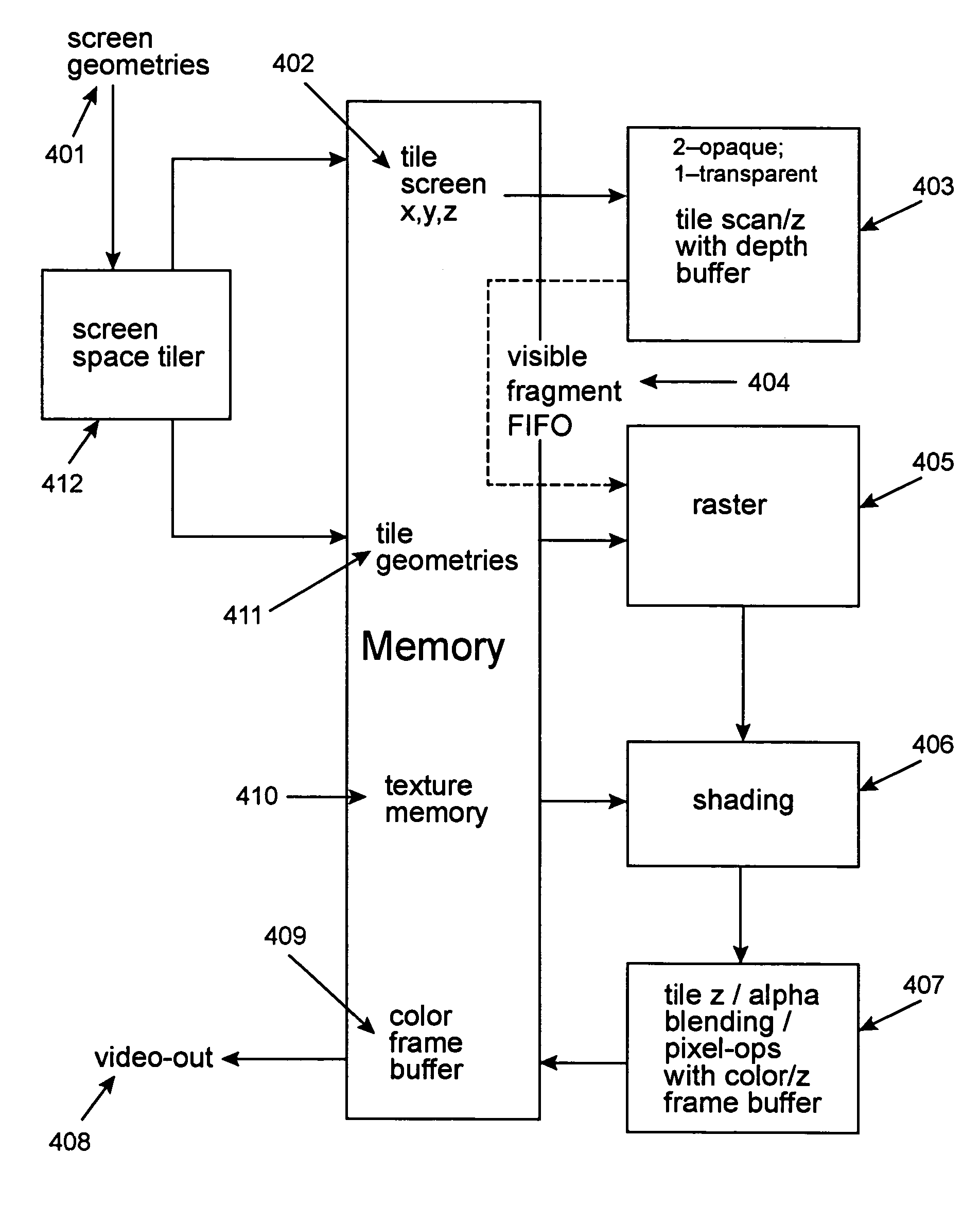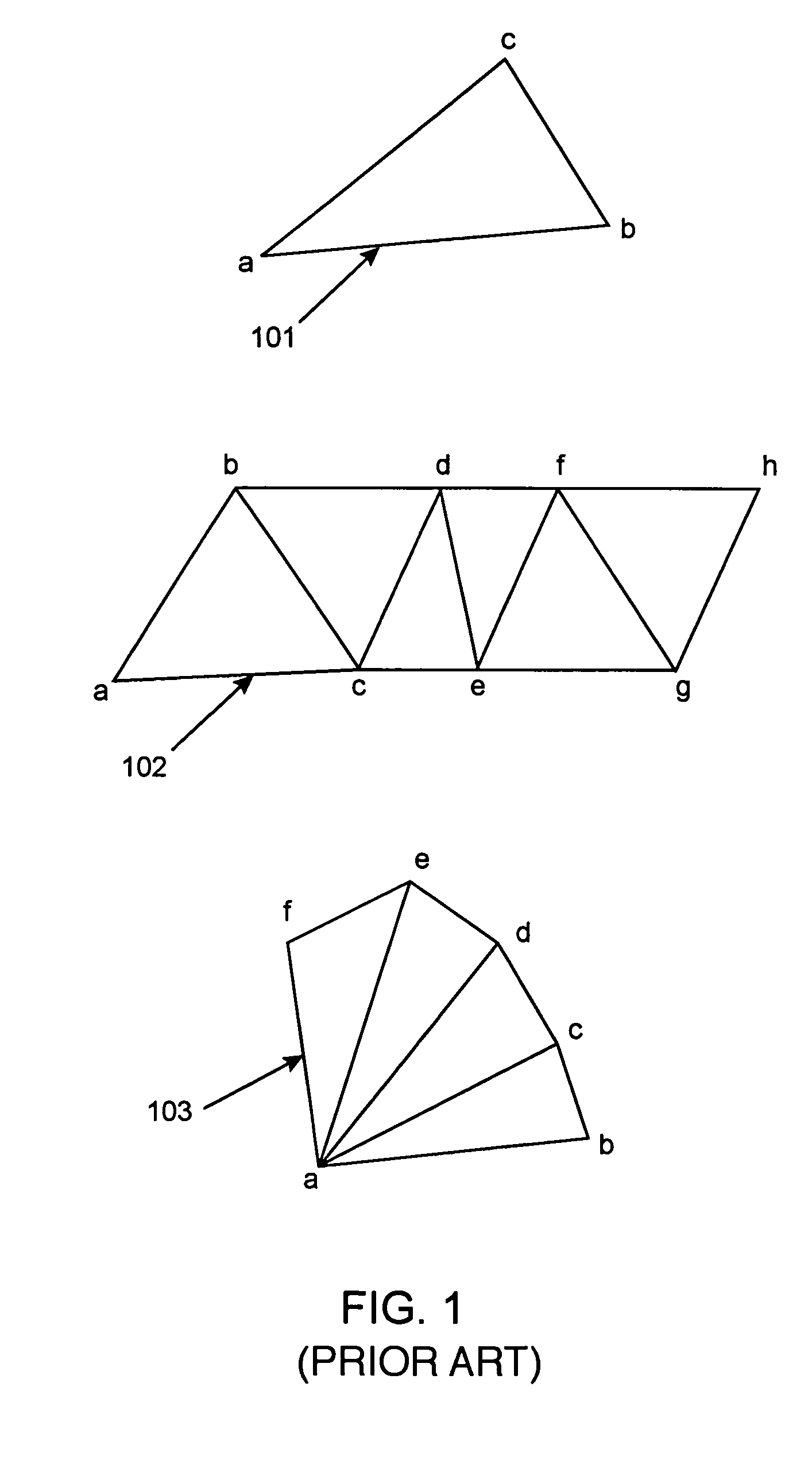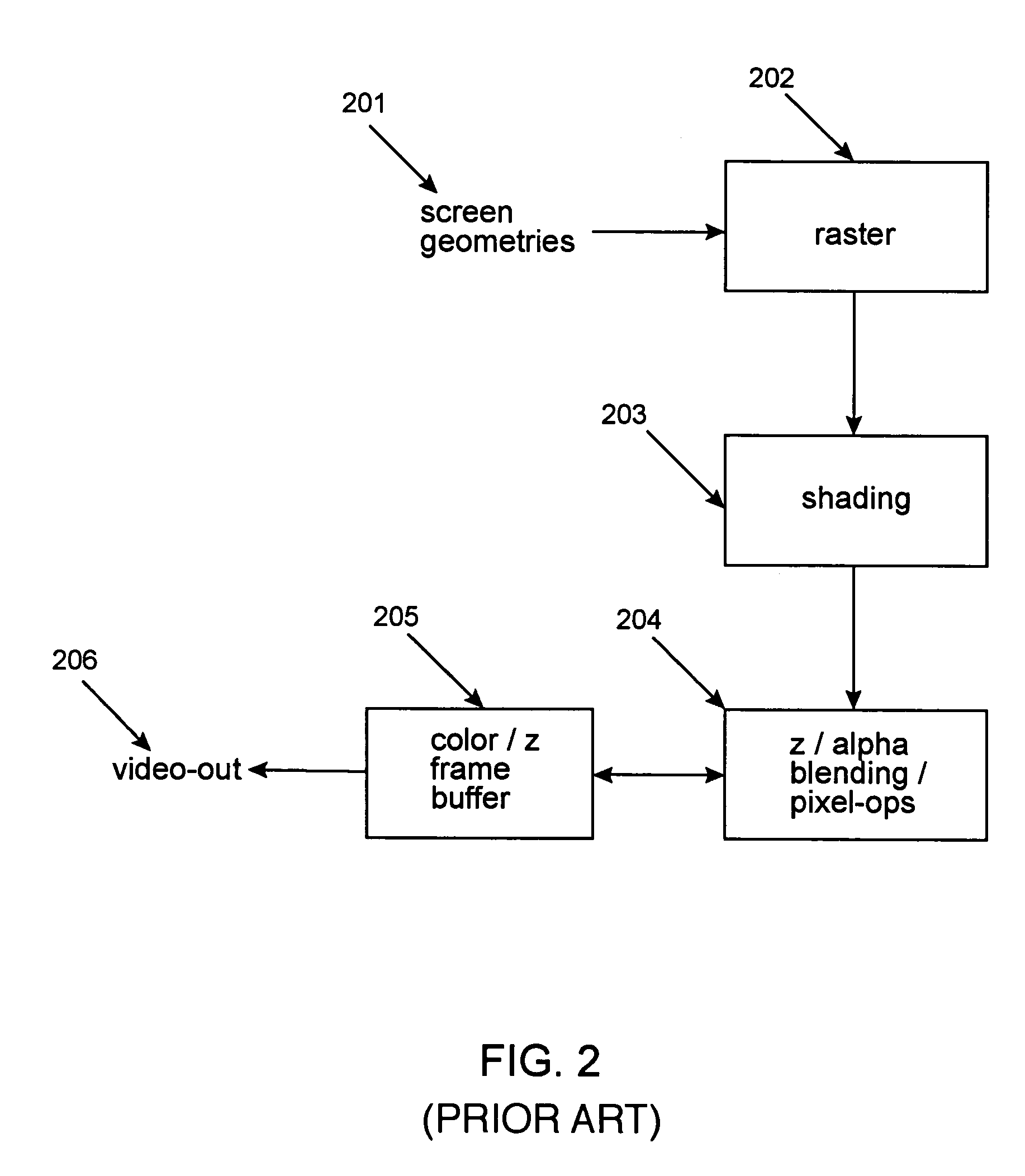Rendering pipeline
a pipeline and pipeline technology, applied in the field of graphics rendering, can solve the problems of affecting the performance of pixel fill, rapid hardware cost increase, and pixel fill performance compromise, etc., and achieves the effect of reducing memory bandwidth bottleneck, improving quality, and facilitating implementation
- Summary
- Abstract
- Description
- Claims
- Application Information
AI Technical Summary
Benefits of technology
Problems solved by technology
Method used
Image
Examples
Embodiment Construction
[0052]As shown in the drawings for purposes of illustration, the invention provides a rendering pipeline system in a computer environment. A system according to the invention provides efficient use of processing capabilities and memory bandwidth through the intelligent management of primitive rendering and memory usage while retaining coherence.
[0053]The invention uses screen space tiling (SST) to eliminate the memory bandwidth bottleneck due to frame buffer access. Quality is also improved by using full-scene anti-aliasing. This is possible under SST because only on-chip memory corresponding to a single tile of screen as opposed to the full screen is needed. A 32×32 tile anti-aliased frame buffer is easily implemented on-chip, and a larger tile size can later be accommodated. Additionally, the invention performs screen space tiling efficiently while avoiding the breaking up primitives and reduces the buffering size required by SST.
[0054]The invention uses a double-z scheme that dec...
PUM
 Login to View More
Login to View More Abstract
Description
Claims
Application Information
 Login to View More
Login to View More - R&D
- Intellectual Property
- Life Sciences
- Materials
- Tech Scout
- Unparalleled Data Quality
- Higher Quality Content
- 60% Fewer Hallucinations
Browse by: Latest US Patents, China's latest patents, Technical Efficacy Thesaurus, Application Domain, Technology Topic, Popular Technical Reports.
© 2025 PatSnap. All rights reserved.Legal|Privacy policy|Modern Slavery Act Transparency Statement|Sitemap|About US| Contact US: help@patsnap.com



